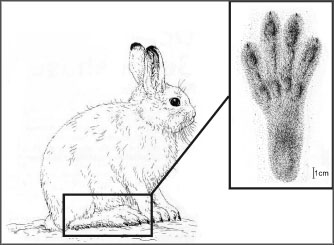 |
|
|
|
|
|
An important factor of the alpine environment is the cold. In mountains of the temperate region (e.g. European Alps), a long winter with up to 6 months of snow cover amplifies the relevance of cold. We can find several adaptations to cope with cold temperatures and snow: |
|
One possible adaptation is to avoid the cold by the selection of a suitable habitat. Even in the coldest winter there are places with a favourable microclimate. Near water the temperature seldom falls below 0°C. The water shrew (Neomys fodiens) in the European Alps or Platypus (Ornithorhynchus anatinus) in the Snowy Mountains take advantage of this fact and live mostly by or in the water. |
1 - Water shrew (Neomys fodiens)(103K) |
|
2 - Chamois (Rupicapra rupicapra), sheltered from the wind (Photo: M. Merker; 117K)) |
The rich tectonics in the mountains offers great variation in exposure to radiation and wind. During their recreation time, mobile animals such as the chamois (Rupicapra rupicapra) often frequent south exposed slopes with high radiation and wind protected areas on the lee-side of rocks. |
|
Another possibility to avoid the cold is to live under snow. Snow is an excellent insulator and a layer of even 30 cm ensures that temperatures on the ground stay constant at about 0°C. Some small mammals like the snow vole (Microtus nivalis) or the common vole (Microtus arvalis) can be active the whole winter in this way. Birds like the black grouse (Tetrao tetrix) or the rock ptarmigan (Lagopus mutus) take advantage of the insolating capacity of snow by digging burrows in the snow for their rest periods or for cover from snowfall. |
3 - Common vole (Microtus arvalis) feeding below the snow 4 - Rock ptarmigan (Lagopus mutus) buried in the snow |
|
Important adaptations concern the fur
of animals. Many species change their fur each fall and each spring. Here
the winter-fur can show different adaptations:
|
|
|||
|
|
Notice the onset of fur change in spring and autumn. It coincides with the onset of snow melt and snow fall respectively in the Alps. | |||
|
Animals overwintering in burrows often gather in larger groups. Communal nesting has the advantage that individuals can heat one another. This is of special importance for younger animals that often can not yet afford the energy necessary to survive the winter on their own. Furthermore, by laying together the surface that is exposed to the cold, is reduced for each individual. |
|
5 - Mountain hares (Lepus timidus): big feet prevent the animal from sinking in the snow. |
Morphological adaptations can include the reduction of unnecessary extremities that would require a lot of energy to maintain their temperature. Other adaptations relate to mobility in snow. E.g. big feet of mountain hare (Lepus timidus), lynx (Lynx lynx) or the black grouse (Tetrao tetrix). |
|
Especially in invertebrates, there are also physiological adaptations which primarily serve to help the animal prevent or tolerate the freezing of the body. |
29 August 2011 |
||
| |
||




